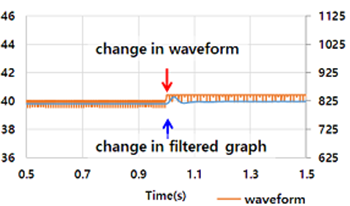
When using VRR displays, one of the recent topics of discussion among users is the flicker that appears when the refresh rate changes. Users may experience VRR flicker when transient luminance fluctuates during refresh rate changes. Unlike the flicker index used for a single static frequency, transient fluctuations on VRR displays are aperiodic and unpredictable. To explain the aperiodic property of VRR flicker, we considered the concept of human visual causality. In the aspect of interpreting the onset of the human response to luminance change in VRR waveform, we compared the results between frequency domain analysis and time domain analysis. Based on the result of testing the preservation of visual causality, we suggest a new VRR flicker index. To verify proposed VRR index, we measured VRR waveforms and test users’ flicker perception using the VESA VRR measurement tool. Additionally, in the controlled psychophysical experiment, we compared the users’ response with our proposed VRR index. As the result, the VRR index based on the time domain analysis well explained users’ experience in VRR displays.
Hyosun Kim, Hyungsuk Hwang, Dongyeol Yeom, "Time-domain Analysis for Variable-refresh-rate Display Flicker" in Electronic Imaging, 2025, pp 214-1 - 214-6, https://doi.org/10.2352/EI.2025.37.11.HVEI-214
 Find this author on Google Scholar
Find this author on Google Scholar Find this author on PubMed
Find this author on PubMed